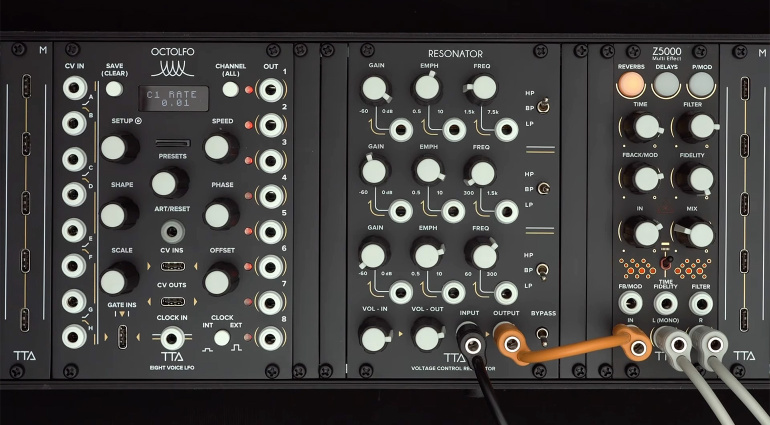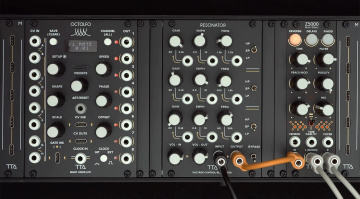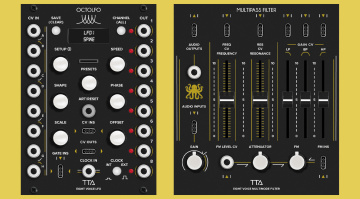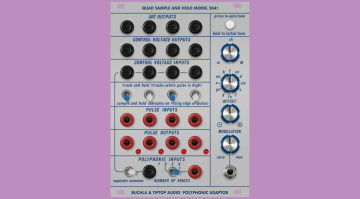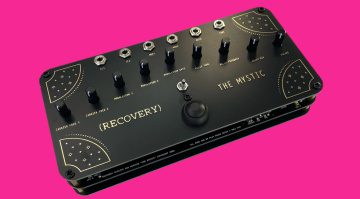Tiptop Audio Resonator Puts the Polymoog Filter in Your Eurorack Rig, More: Synth Journal
The best of the rest of this week’s synth news.
Get the lush sound of the Polymoog Resonator filter bank in your signal path with Tiptop Audio Resonator. That and much more in this week’s Synth Journal.
Synth Journal
Tiptop Audio Resonator
The Moog Ladder filter may get all the love, but the company has more filter tricks up its sleeve than just that one 24dB/Oct lowpass. There’s the 914 Fixed Filter Bank module with its 12 bandpass filters and two shelf limiters, and there’s also the Resonator, which appeared on the 1975 Polymoog. It’s a lovely thing, with three fixed bands and switchable high-, low-, or bandpass modes. Now Tiptop Audio has recreated it for Eurorack, and it’s a thing of beauty.
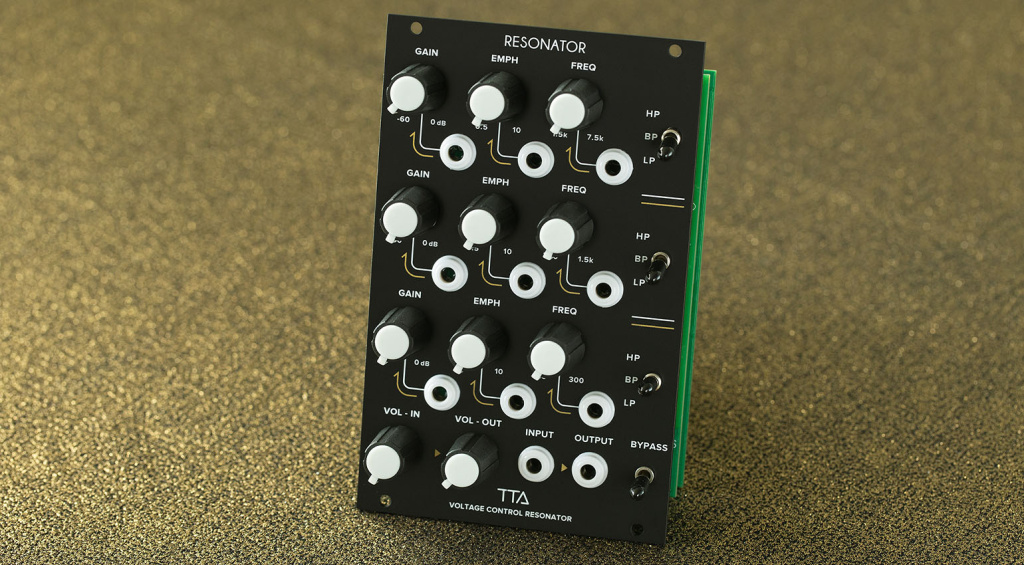
The Tiptop Audio Resonator gives you the three banks at high, medium, and low-frequency band levels, with gain and emphasis (resonance) controls for each, plus a frequency sweep. Of course, it’s all CV controllable, with input jacks for each gain, emphasis, and frequency pot. Additionally, there’s a limiter on the emphasis so things never get out of hand. And, handily, you can set each band to a different filter type (highpass, bandpass, or lowpass), unlike the original, which affected all bands globally. All that inside 16HP.
Tiptop Audio Resonator sounds absolutely gorgeous. It’s also very affordable. I’m seriously considering getting one even though my Eurorack rig is so tiny it’s almost a fetus.
Tiptop Audio Resonator is available at Thomann* for $182 / £168 / €189.


Ferry Island Modular Four Seas
Another Eurorack module that slid into the GN DMs this week was Four Seas, the first product from new outfit Ferry Island Modular. And wavetastic it does look too. That’s because it’s a wavetable oscillator module, but with some unique functionality to separate it from all of the other fish in the sea.
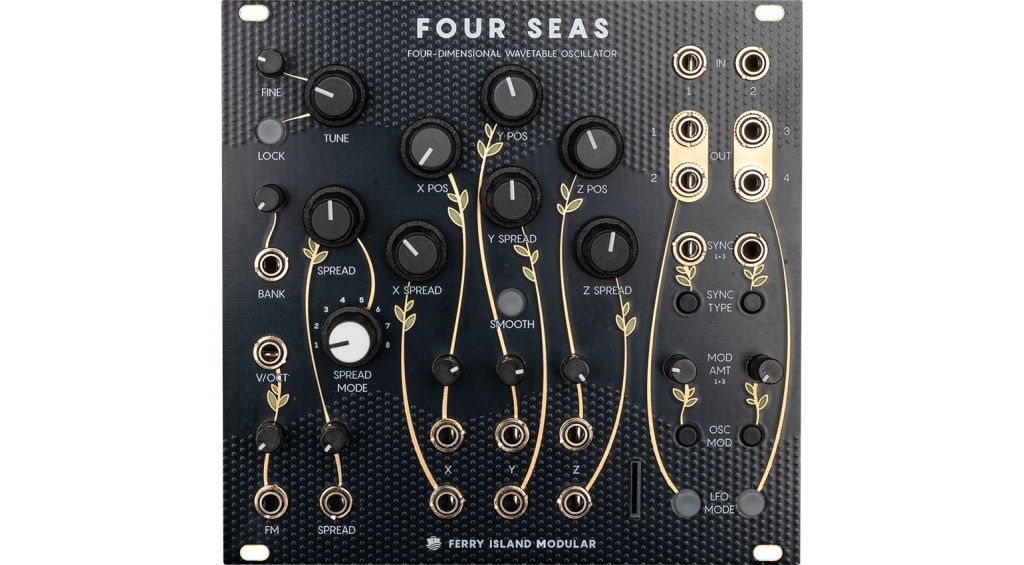
Ferry Island Modular is billing the 26HP Four Seas as a four-dimensional wavetable oscillator, and that’s because it gives you access to, well, four dimensions of sound manipulation. First, the X, Y, and Z controls let you manipulate the wavetable as if it were a three-dimensional cube, with the fourth dimension coming not as time but as four outputs governed by spread controls, which affect tuning in a variety of ever-increasingly wild ways. You also get through-zero phase modulation, phase distortion waveshaping, and fixed-point scalar underflow (“FSU”) modes, LFO modes, and the ability to load your own wavetables.
Visit Ferry Island Modular to find out more.
Landscape and Mystic Circuits Moon
I love this idea. Moon is a new instrument from Landscape in partnership with Mystic Circuits. It’s a four-channel analog percussion synth that’s entirely passive. There’s no power supply at all. It draws current momentarily from the gate and CV signals that you feed it, activating the circuits in a natural way. If this sounds familiar, that’s because it’s based on Noon, a larger instrument from the same team. Moon is its own thing, though.
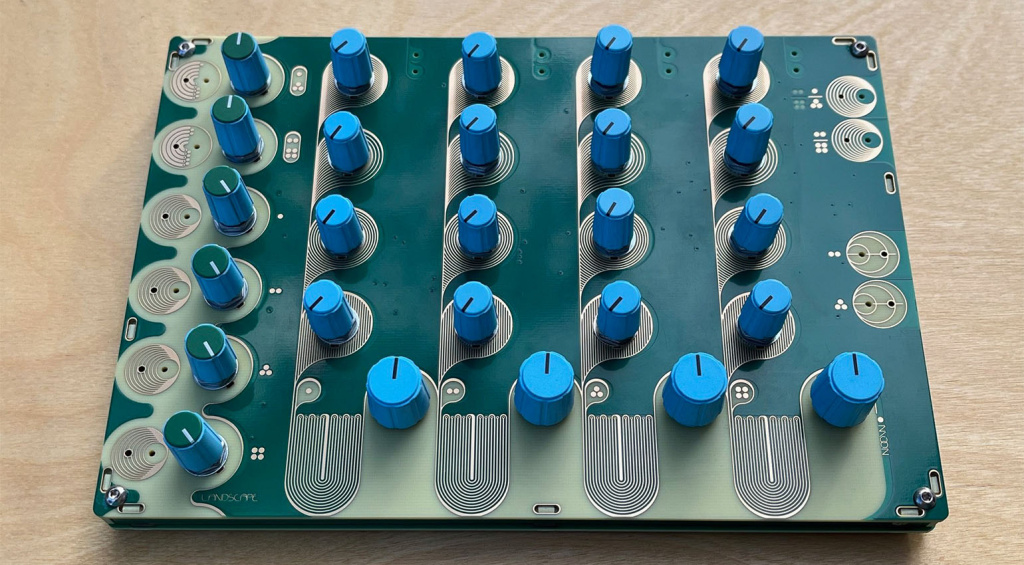
Each of the four channels is independent, with its own tolerances and behaviors. You can also combine channels, encouraging them to interact in organic ways. Moon also offers touch plates under the knobs to change pitch and texture. If you’re into glitchy electronic music or are looking for something out of the ordinary, this could fit the bill.
Landscape is currently taking preorders for $390, which it promises will be equal to or lower than the final price. Shipping is estimated to start in winter 2025 or 2026.
Biyiblip Blippoo Box Legacy
In 2022, Dutch synth designer Rob Hordijk unfortunately passed away. His friend Biyi Amez, working under the name Biyiblip, has recently begun manufacturing one of Rob’s most enduring designs, the Blippoo Box. Called Blippoo Box Legacy, it brings Rob’s idea of “bent by design” back for another go at turning chaos into sound.

The Blippoo Box Legacy comes in two models, with quarter-inch jacks or banana jacks, but otherwise the design is the same: two source oscillators and two peak resonators, with rate control over the oscillators, sample and hold, and the famous Rungler doing its magic on the oscillators and peaks.
“The instrument is engineered to constantly seek out ‘balanced states’ – what mathematicians call attractors,” says the product page. “Within these states, the machine generates patterns that, while never perfectly repeating, have roughly predictable sonic characteristics. These patterns can persist, creating a stable soundscape, before a tiny change in a knob’s position pushes the system across a threshold, causing it to ‘bifurcate’ and settle into a new, entirely different balanced state.”
It’s utterly unique and as much a work of art as an instrument. The two models are available on the Noisebug site.
EMS Synthi 100 Up for Auction
This week, on November 8, the 61st VEMIA auction will take place. Run by Peter Forrest of The A-Z of Analogue Synthesizers books fame, the VEMIA auctions usually bring in some pretty amazing gear (like Aphex Twin’s GX-1 from earlier this year). This week’s auction looks to be the last, and fittingly, there’s a huge amount of incredible stuff on the docks. But the most jaw-dropping as to be this EMS Synthi 100.

Serial number 007 (out of approximately 30 to 40 made!), this one looks to be in amazing condition, with the seller saying it’s had a complete overhaul, and includes the woodwork and dual manual keyboard in the purchase price. The listing states that the former owner was Swiss musician Bruno Spoerri, who made some incredible synth albums, like Voice of Taurus.
The starting price for the Synthi 100 is £139304 / €159950. Should you win, you’ll have to organize your own shipping, which will be substantial. But what an opportunity.
More Information
*Note: This article contains advertising links that help us pay for this site. Don’t worry: the price for you will always be the same! If you buy something through these links, we will receive a small commission. Thank you for your support!


 4,0 / 5,0 |
4,0 / 5,0 | 